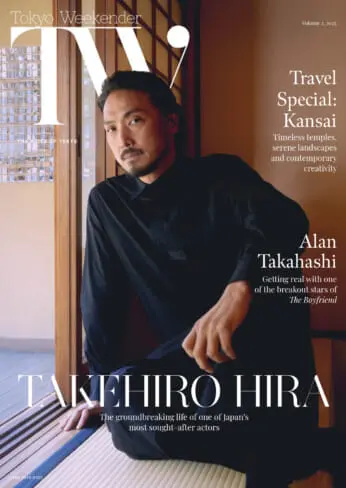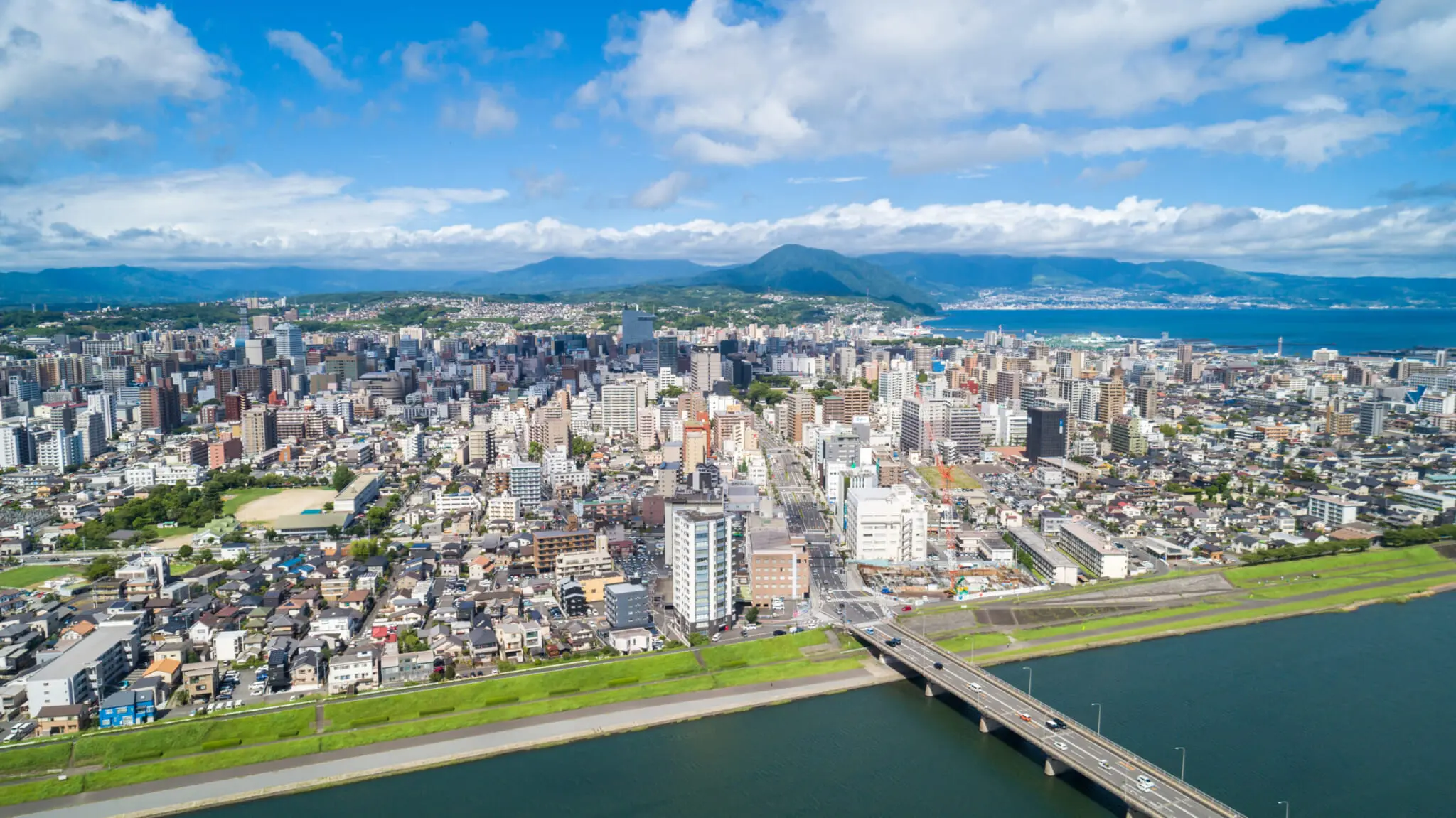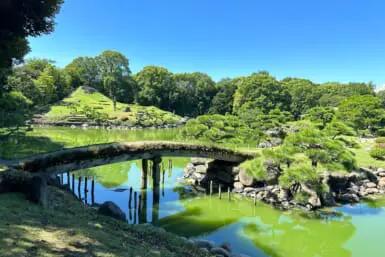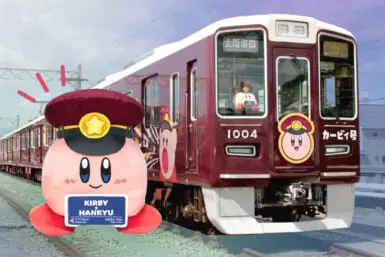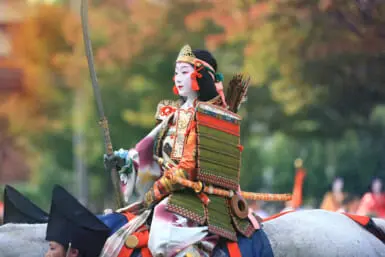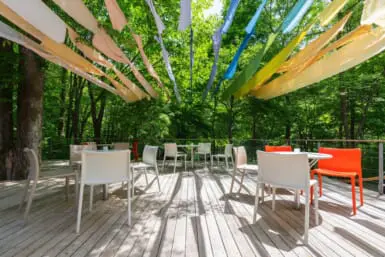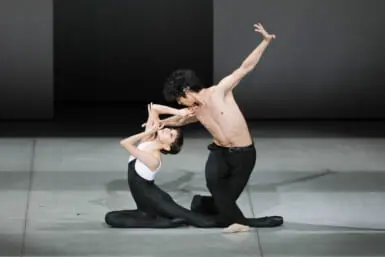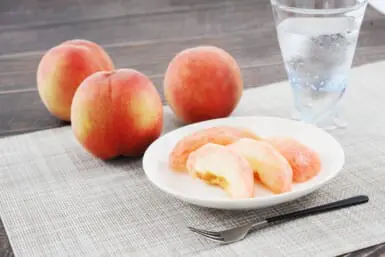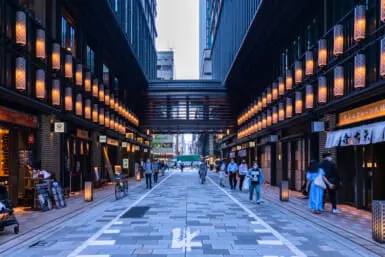Oita city sits on the eastern edge of Kyushu, neighboring Beppu and Yufu. With breathtaking views of Beppu Bay and an alluring halo of vast mountain ranges, Oita’s scenery sets the stage for boundless adventure; the city’s rich history, unique villages, soothing hot springs, natural animal habitats and delectable cuisine make it a must-visit.
Experience Oita City’s Nature
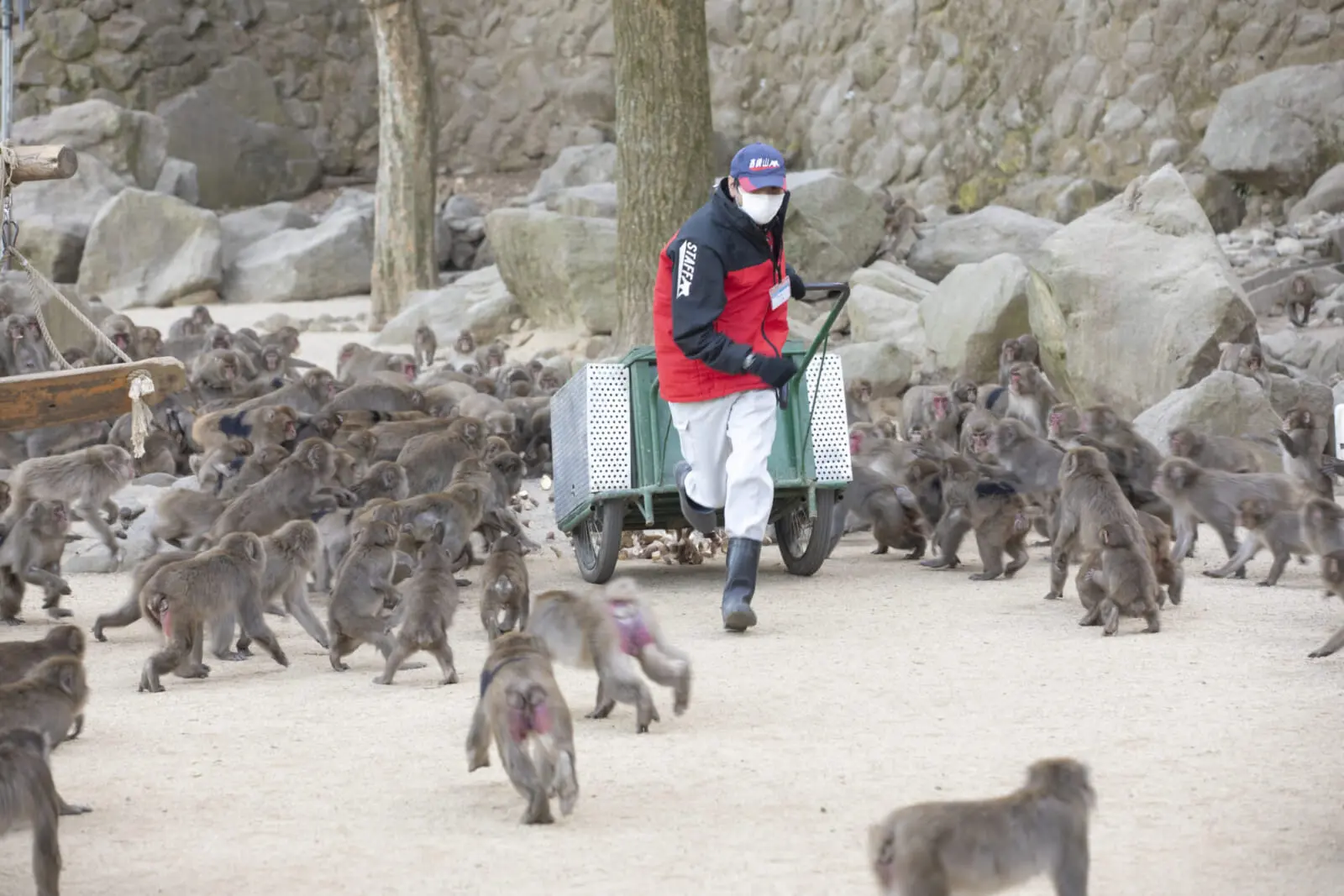
Meet Monkeys at the Takasakiyama Natural Zoological Garden
The Takasakiyama Natural Zoological Garden reimagines the typical zoo experience by allowing the Japanese macaques to exist in their natural state, outside of cages, and gives guests the opportunity for up-close interactions. It is home to one of the largest groups of Japanese macaques in the world, with an estimated 1,000 monkeys to observe.
The monkey gathering area is a spectacle — especially during feeding time. The animals are fed wheat every 30 minutes, but the real excitement starts when the sweet potato cart comes out.
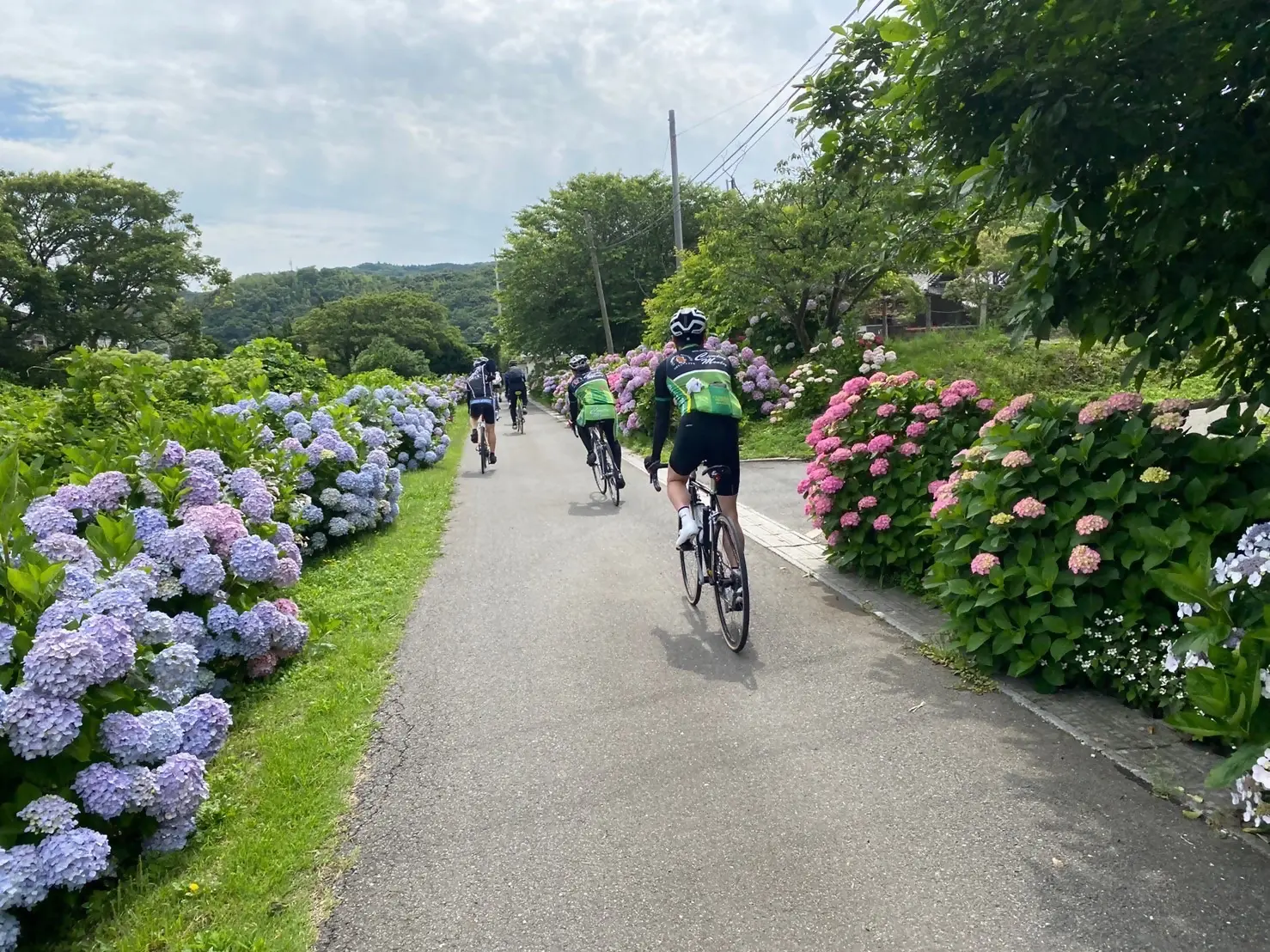
Encounter Oita City’s Natural Beauty by Bicycle
Continue your exploration of Oita’s natural wonders on a cycling sightseeing course. The Oita bicycle map offers several routes recommended by local residents, each with a different theme — from cycling alongside Tanoura Beach on the “Fresh Sea Breeze Seaside Route” to exploring multiple historical cultural points throughout the city such as Uenoharu Palace, Uenogaoka Park and Kongohokai-ji Temple on the “History and Culture Tour Route.” For those planning to sightsee around Oita city by bike, opt for the Oita Cycle Share. You can rent and return electric-assist bicycles anytime, 24 hours a day, at various cycle ports located throughout the city.
Heal Yourself With Forest Therapy
Nearly half of Oita city is covered by forests, making it an ideal spot for engaging in “Forest Therapy” — a healing practice (trademarked by Forest Therapy Society) that aims to promote and maintain individuals’ physical and mental health through immersion in forests.
Around 60 forests in Japan are certified as forest therapy spots by the Forest Therapy Society; in 2012, Oita city became the site of the first official forest therapy base and therapy road in all of Oita Prefecture. There are currently numerous therapy roads to follow in Oita city, including the Takasakiyama Therapy Road, which includes a hike to the summit of Mount Takasakiyama for a gorgeous view of Beppu Bay, Kunisaki, Yufu-Tsurumi Mountains.
Take a Hot Spring Tour
Rest your feet from the day’s adventures at the many mineral-rich onsen around the city. Oita has the highest hot spring water yield in Japan. The Oita Yumeguri guide map is a complete guide with access information, pricing and helpful icons to indicate whether the location is family recommended or tattoo-friendly. Soak in the sights with the rotenburo outdoor baths to reconnect with nature.
Experience Oita City’s Culture and History
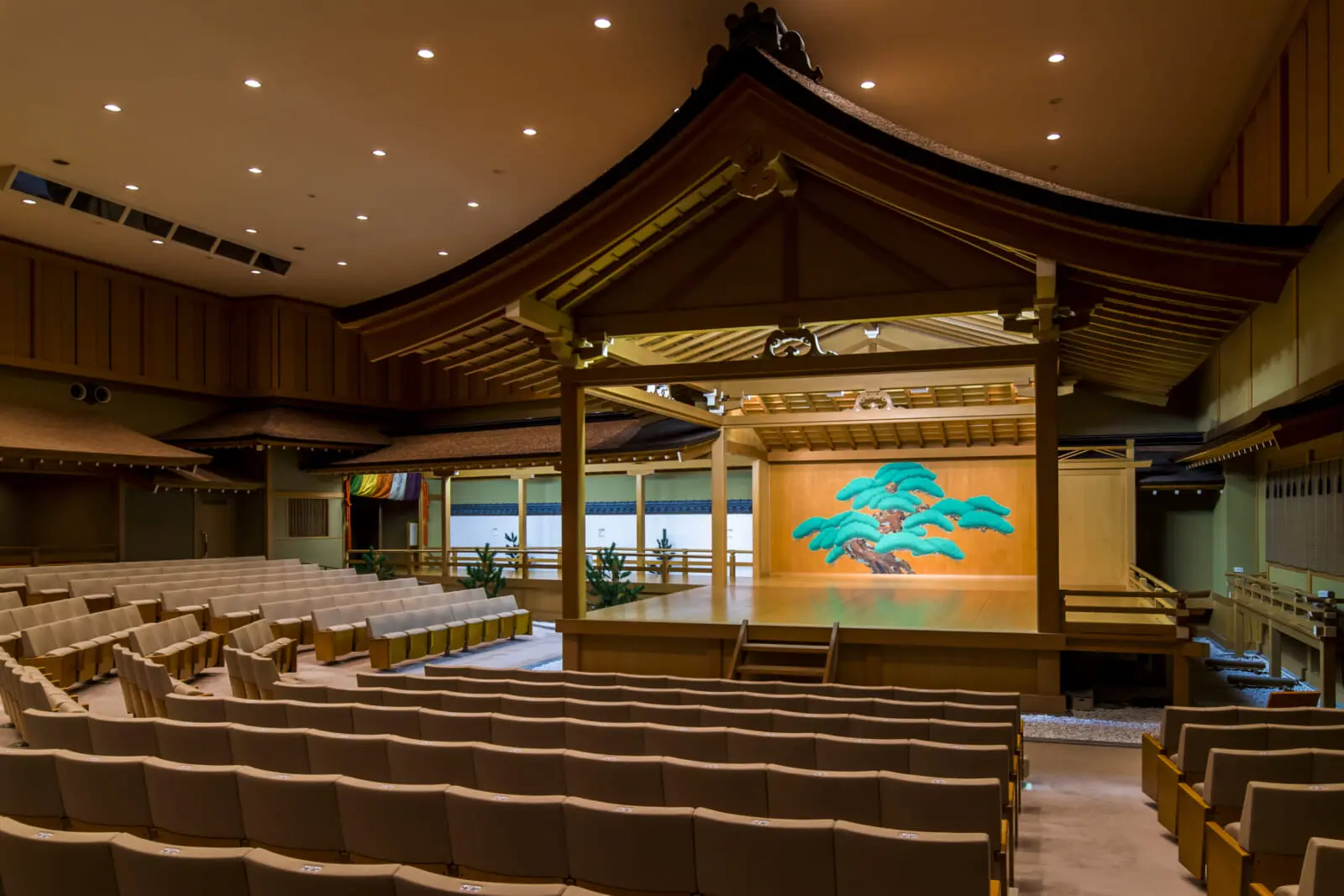
Immerse Yourself in Noh Theater
Oita’s Heiwa Shimin Park Noh Theater invites guests to experience the magic of one of the world’s oldest performing arts: Noh, a sophisticated and captivating dance-drama that’s been performed since the 14th century. The stage here is one of Japan’s leading authentic Noh theaters, crafted with over 200-year-old cypress wood that shines with a beautiful luster. Events, performances and lectures are regularly held here, and there’s also an impressive display of Noh masks.
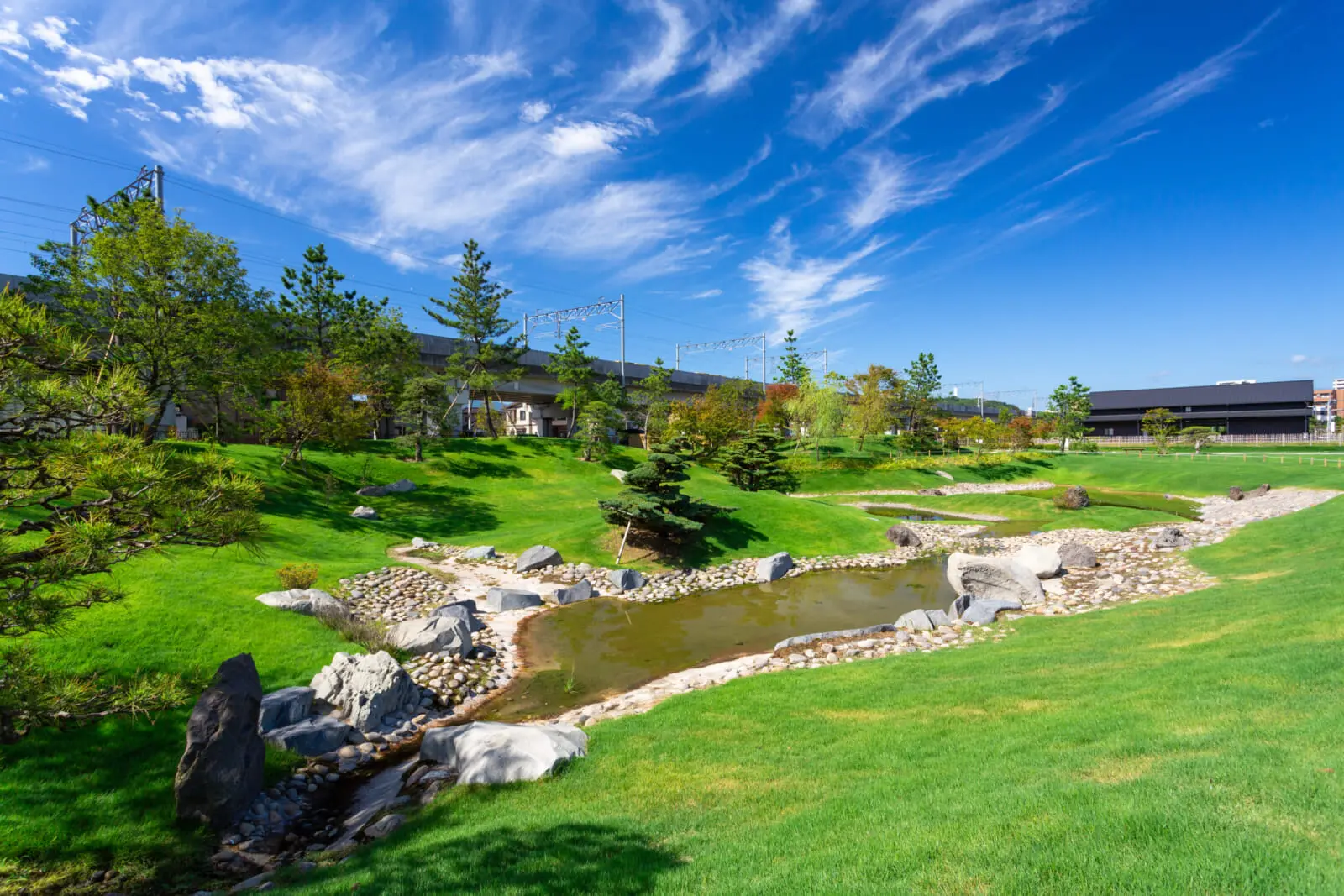
Visit the Ruins of the Otomo Clan Residence
The Otomo family was a powerful samurai clan who ruled over Oita for over 400 years. They’re especially notable as one of the first clans to make contact with Europeans and to establish a trade relationship with them, and are still revered in the area to this day.
In 1998, archeologists unearthed the ruins of the Otomo residence, a grand estate with sprawling grounds. The Otomo Clan Residence Ruins Garden is now open to visitors, and its grounds have been painstakingly restored to recreate the original Otomo family gardens, with a variety of classical features including a pond, waterfalls, man-made hills and stones arranged in various spots.
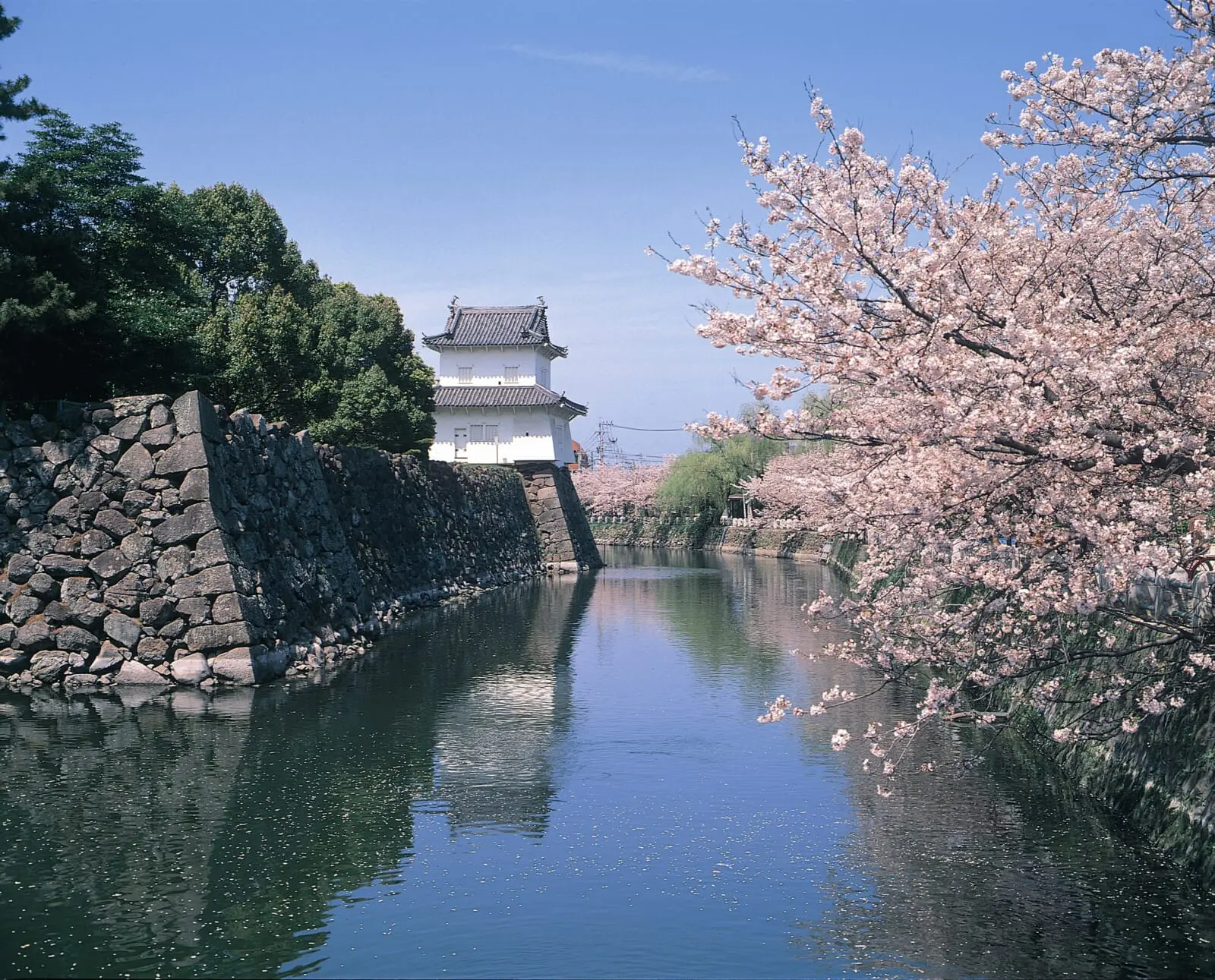
Appreciate the Majesty of Funai Castle
After the fall of the Otomo clan’s 400-year reign, construction of Funai Castle began in the 16th century. The castle grounds are now a public park, following several reconstruction projects; remnants of its stone walls and moats still stand, too, providing a fascinating glimpse into Oita’s history. From late March to early April, the park is renowned for its cherry blossoms in full bloom, drawing many visitors to enjoy the stunning sight.
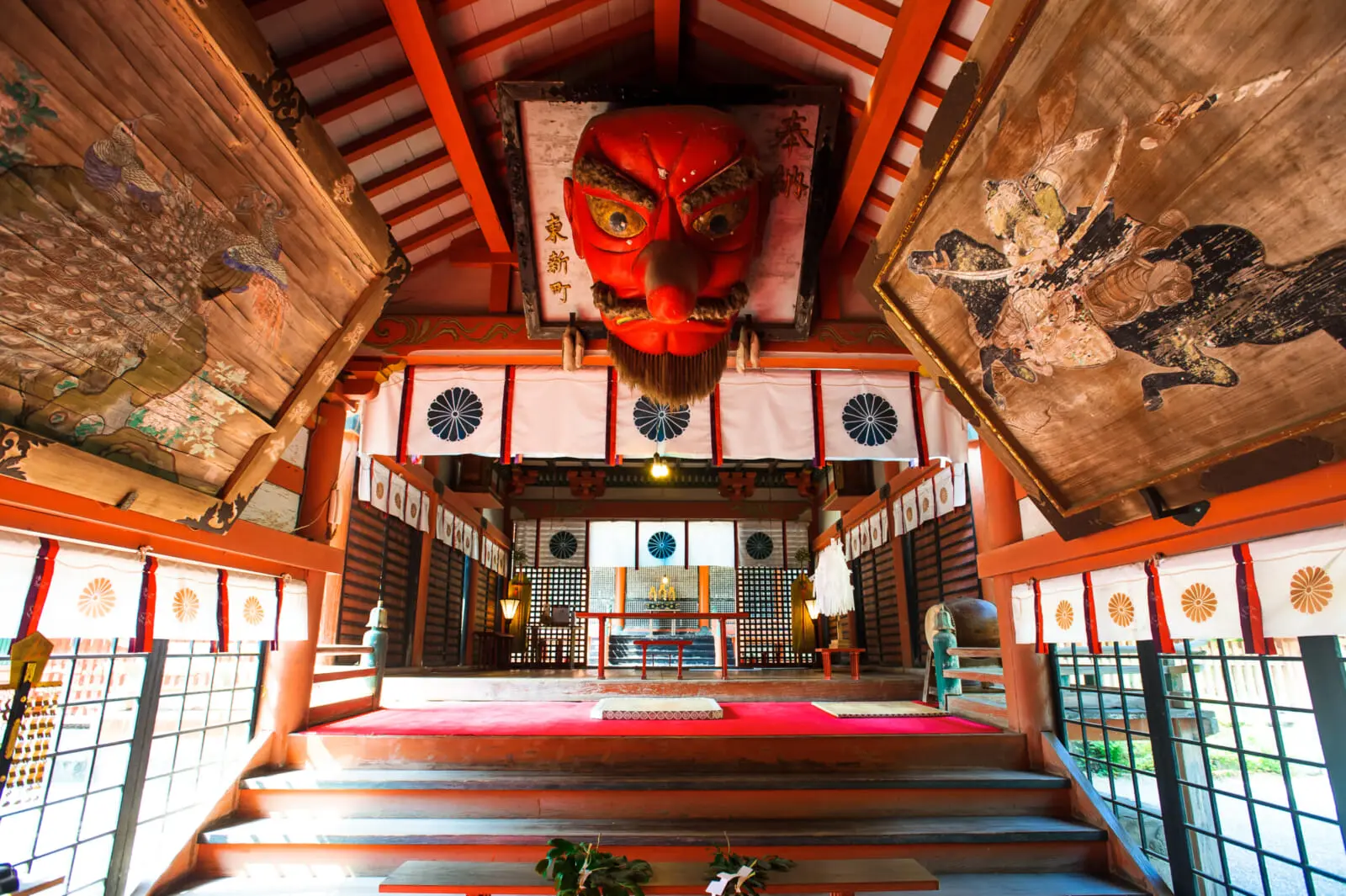
Feel Centuries of History at Yusuhara Hachimangu Shrine
Yusuhara Hachimangu Shrine is believed to have been established during the Heian period (836), making it one of the oldest and most historically significant shrines in Oita. Since ancient times, this historic shrine has been revered as a branch of Usa Shrine, earning the devotion of local governors and samurai families. Like many historical structures in the area, it has strong connections with the Otomo clan. On its grounds stands a massive camphor tree that’s said to be 3,000 years old, and its southern gate, known as the Higurashimon, features beautiful and ornate carvings.
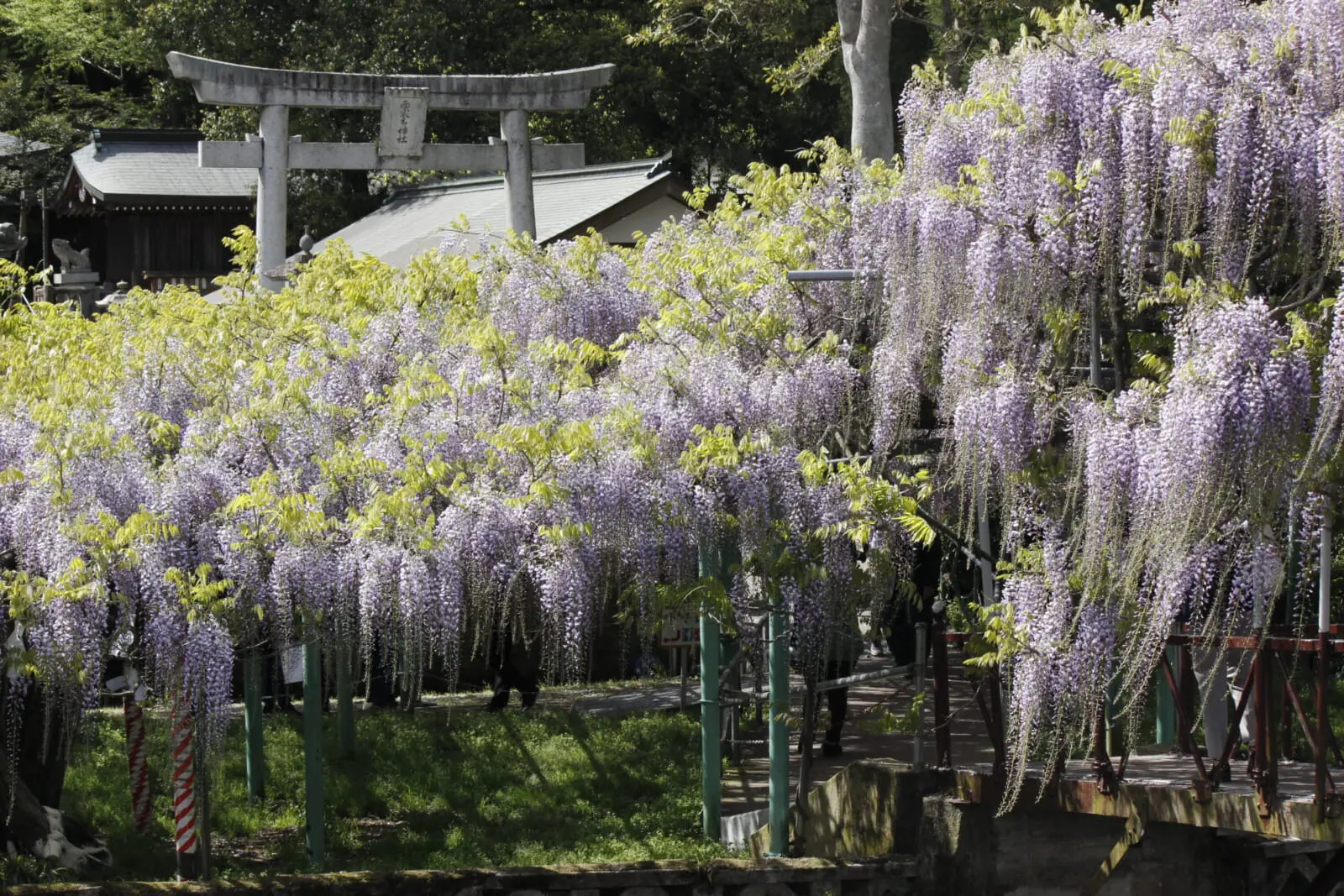
See Wisteria in Bloom at Sasamuta Shrine
Sasamuta Shrine is one of the distinguished shrines of the former Bungo Province (current-day Oita). Since its establishment, the shrine has been a place of worship for powerful warlords and samurai, including the Otomo clan. Marking the shrine’s deep historical roots is a 450-year-old wisteria tree; when the flowers bloom, the shrine is enveloped with the stunning glow of their light purple hue. The shrine is also famous for the Mannen Bridge, a beautiful stone structure which arches over a river at the shrine entrance.
Experience Oita City’s Gastronomy
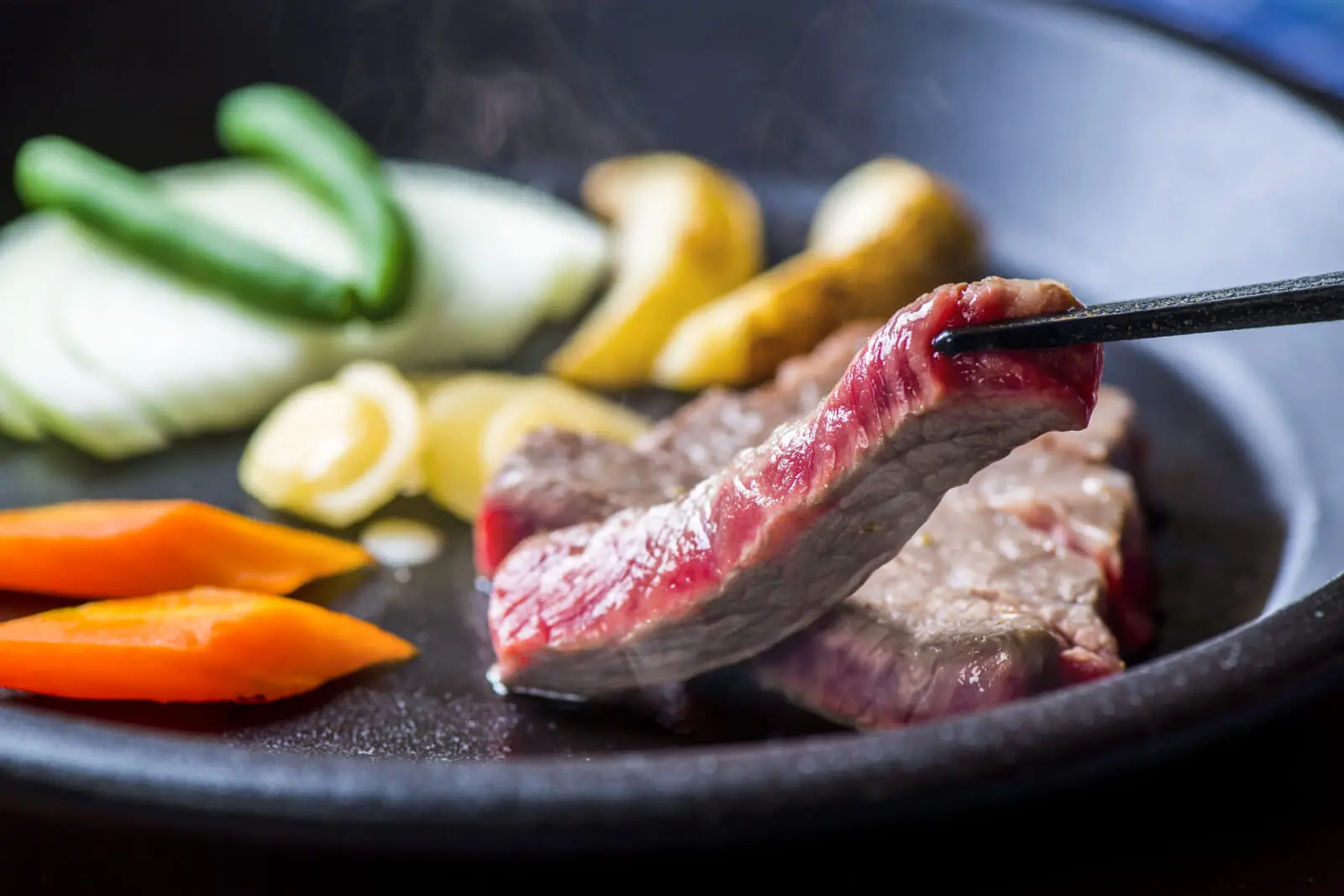
Bungo Beef: Melt-in-Your-Mouth Wagyu from Oita
Bungo-gyu — or Bungo beef — comes from a breed of Japanese cattle renowned for its high-quality meat, characterized by rich marbling and an incredibly tender texture that seems to literally melt in your mouth. As the name implies, Bungo-gyu cattle come from Oita Prefecture, where they’re raised under strict regulations that ensure the impeccable quality of the meat. Oita’s natural landscape is crucial in this regard: Its serene mountains, warm climate and fertile soil all aid in minimizing stress on the cows to support their healthy growth.
Unsurprisingly, Oita city has a wealth of establishments that serve Bungo-gyu in a variety of ways, including Ginzan Tei, Kappo Dining Sajiki-za and Bungo Steak Somuri.
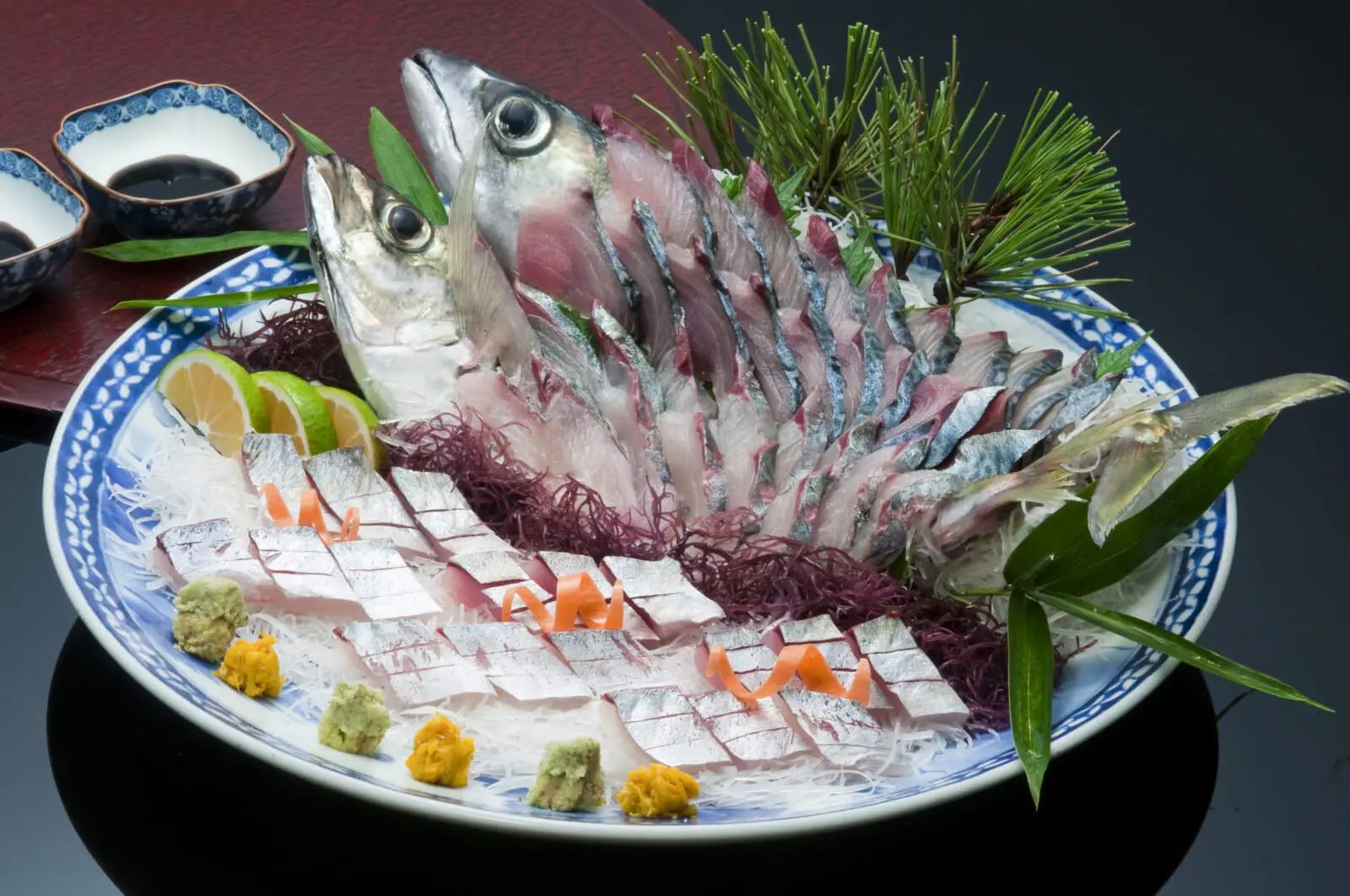
Seki-aji and Seki-saba: Oita’s Prized Seafood
For the fish and seafood connoisseurs, a stop at Oita city’s Shiraki Beach is a must. Here, in the fertile fishing coast of Saganoseki, you’ll find plentiful seki-aji and seki-saba. These specialty mackerel breeds have a savory taste with a slightly firm texture.
Access Information
You can easily visit Oita through a direct flight from Tokyo’s Haneda Airport or Narita Airport in less than two hours, or from Osaka’s Itami Airport in one hour. From the Oita Airport, it’s about an hour by bus to Oita city.
Alternatively, Oita can be accessed from Tokyo via shinkansen and express trains, with a transfer at Kokura Station in Kitakyushu. The shinkansen route takes around six hours.
For more information, visit the official Oita City Website or the website of the Oita City Tourism Association. You can also follow the Oita City Tourism Division’s Instagram here.
